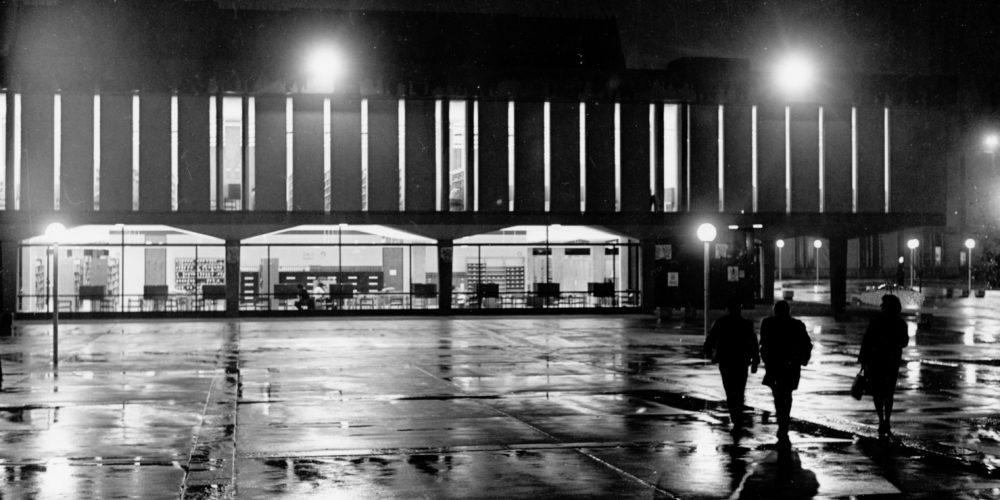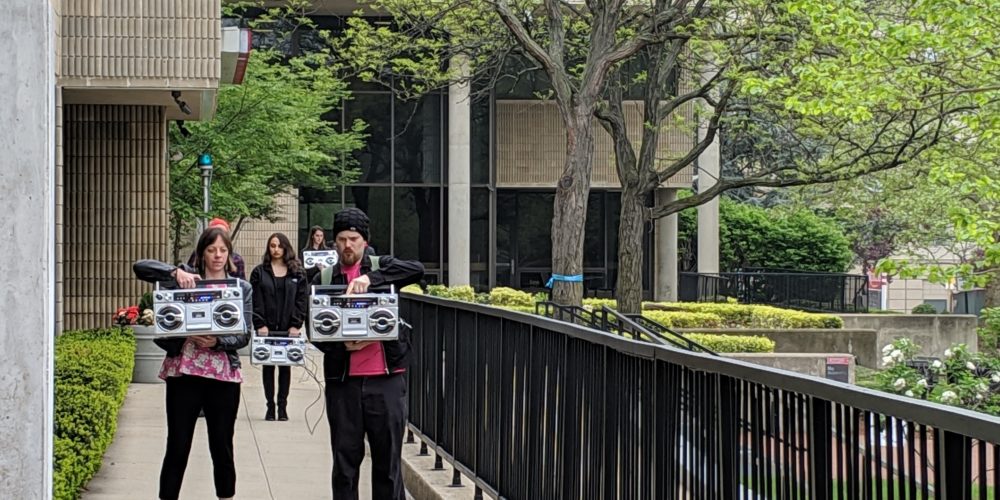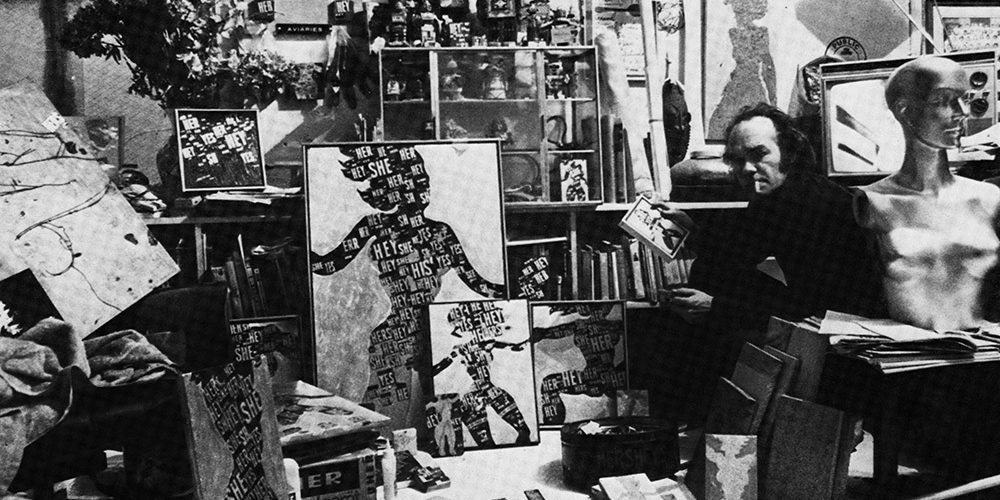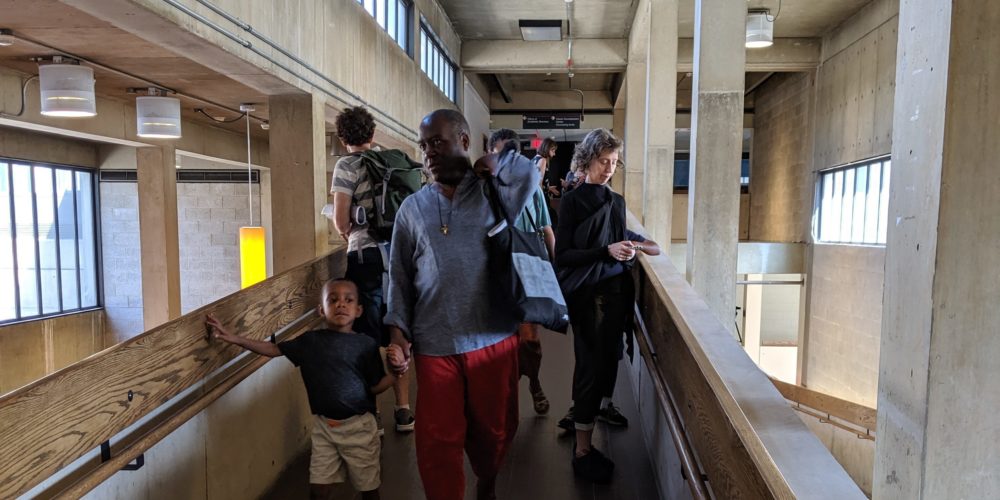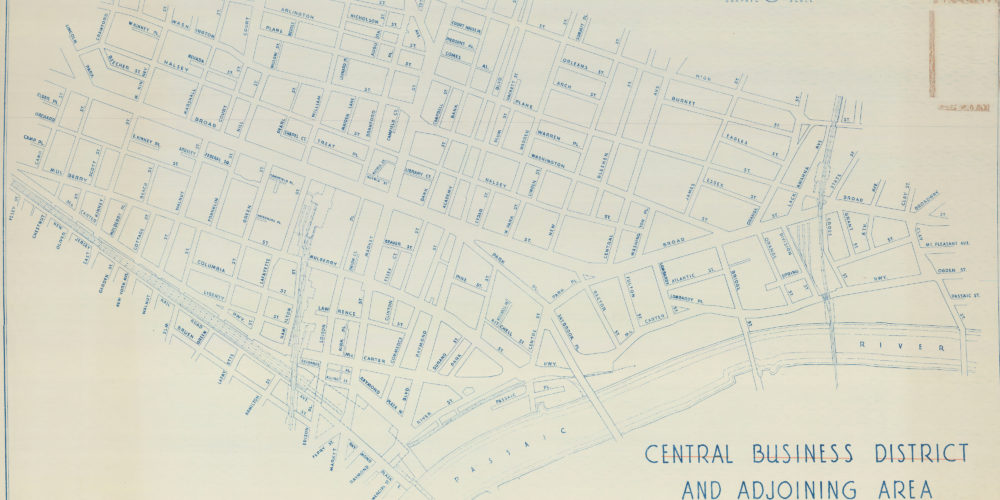
Rhythm 3 (Future)
Rhythm 3 (Future)
Newark Rhythms is currently running three projects on the history and experience of Newark as an urban space: the Labyrinth and the Grid, the Archive, and Urban Thresholds. The Labyrinth and the Grid focuses on “embodied mapping,” based on maps that represent different affective and sensory encounters with Newark. The map-makers – artists and scholars in the humanities – contemplate the urban arts as they arise in the contemporary city and the city of history and memory. In a separate sound environments section, sound artists and musicologists present the soundscape of four Newark streets from various theoretical positions. The maps and recordings are slated to be exhibited on campus in April 2022, with supporting materials posted on the website as the maps develop. The Archive is a curriculum project that presents abstracts of student research on Newark. This work comes from different courses at the university and adds original research to expand our knowledge of Newark’s rich history. Urban Thresholds explores how we create mental and emotional maps of a city, how embodied experiences and physical thresholds create boundaries between insiders and outsiders, and other questions about how ‘places’ are made.
LAB + GRID
The Labyrinth and the Grid exhibition focuses on embodied mapping and the sensory experience of space, including the orienting/disorienting effects of aural architecture. In the Labyrinth, visitors will move through an actual maze of large map panels, hung from the ceiling, as a metaphor for the different ways we experience the city and our place within it. At its endpoint, the Labyrinth leads to the Sound Grid section, where visitors can move into a darkened cabinet to listen to sound recordings of the four Grid streets.

ABSTRACTS
The Archive presents abstracts of students’ original research on Newark, expanding our knowledge of Newark’s history.
- A brief history of urban renewal in Newark
- A Pragmatic View of Urban Renewal — Chelsea Rager
- Climbing the Ladder: A Three-Level Analysis of the HIV/AIDS Epidemic in Newark — Luciano Baez
- Religion, Counter Culture, and Rebellion in the 1960s — T'ai Sekyere-Harte
- Juvenile Delinquency: Different Responses in 1915 and 1957 — Sarah Paul

URBAN THRESHOLDS
Urban thresholds are about ‘access’ and ‘affect’: they are created through intangible sensory barriers that imply who gets to go where and when, and with what kind of expressive behavior. Like physical barriers, but on a sensory rather than overtly structural level, they allow access for some pedestrians and not for others, creating emotional communities and perceptions of “place” as a space of meaning.

